第46章
CARIPI AND THE BAY OF MARAJO
River Para and Bay of Marajo--Journey to Caripi--Negro Observance of Christmas--A German Family--Bats--Ant-eaters--Hummingbirds--Excursion to the Murucupi--Domestic Life of the Inhabitants--Hunting Excursion with Indians--White Ants That part of the Para river which lies in front of the city, as Ihave already explained, forms a narrow channel, being separated from the main waters of the estuary by a cluster of islands.This channel is about two miles broad, and constitutes part of the minor estuary of Goajara, into which the three rivers Guama, Moju, and Acara discharge their waters.The main channel of the Para lies ten miles away from the city, directly across the river; at that point, after getting clear of the islands, a great expanse of water is beheld, ten to twelve miles in width; on the opposite shore the island of Marajo, being visible only in clear weather as a line of tree-tops dotting the horizon.A little further upwards, that is to the southwest, the mainland on the right or eastern shore appears--this is called Carnapijo; it is rocky, covered with the neverending forest, and the coast, which is fringed with broad sandy beaches, describes a gentle curve inwards.The broad reach of the Para in front of this coast is called the Bahia, or Bay of Marajo.The coast and the interior of the land are peopled by civilised Indians and Mamelucos, with a mixture of free negroes and mulattos.They are poor, for the waters are not abundant in fish, and they are dependent for a livelihood solely on their small plantations, and the scant supply of game found in the woods.The district was originally peopled by various tribes of Indians, of whom the principal were the Tupinambas and Nhengahibas.Like all the coast tribes, whether inhabiting the banks of the Amazons or the seashore between Para and Bahia, they were far more advanced in civilisation than the hordes scattered through the interior of the country, some of which still remain in the wild state, between the Amazons and the Plata.There are three villages on the coast of Carnapijo, and several planters' houses, formerly the centres of flourishing estates, which have now relapsed into forest in consequence of the scarcity of labour and diminished enterprise.One of the largest of these establishments is called Caripi.At the time of which I am speaking, it belonged to a Scotch gentleman, Mr.Campbell, who had married the daughter of a large Brazilian proprietor.Most of the occasional English and American visitors to Para had made some stay at Caripi, and it had obtained quite a reputation for the number and beauty of the birds and insects found there; I therefore applied for, and obtained permission, to spend two or three months at the place.
The distance from Para was about twenty-three miles, round by the northern end of the Ilha das oncas (Isle of Tigers), which faces the city.I bargained for a passage thither with the cabo of a small trading-vessel, which was going past the place, and started on the 7th of December, 1848.
We were thirteen persons aboard: the cabo, his pretty mulatto mistress, the pilot and five Indian canoemen, three young mamelucos (tailor-apprentices who were taking a holiday trip to Cameta), a heavily chained runaway slave, and myself.The young mamelucos were pleasant, gentle fellows; they could read and write, and amused themselves on the voyage with a book containing descriptions and statistics of foreign countries, in which they seemed to take great interest--one reading while the others listened.At Uirapiranga, a small island behind the Ilha das oncas, we had to stop a short time to embark several pipes of cashaca at a sugar estate.The cabo took the montaria and two men; the pipes were rolled into the water and floated to the canoe, the men passing cables round and towing them through a rough sea.Here we slept, and the following morning, continuing our voyage, entered a narrow channel which intersects the land of Carnapijo.At 2 p.m.we emerged from this channel, which is called the Aitituba, or Arrozal, into the broad Bahia, and then saw, two or three miles away to the left, the red-tiled mansion of Caripi, embosomed in woods on the shores of a charming little bay.
The water is very shallow near the shore, and when the wind blows there is a heavy ground swell.A few years previously, an English gentleman, Mr.Graham, an amateur naturalist, was capsized here and drowned with his wife and child, while passing in a heavily-laden montaria to his large canoe.Remembering their fate, I was rather alarmed to see that I should be obliged to take all my luggage ashore in one trip in a leaky little boat.The pile of chests with two Indians and myself sank the montaria almost to the level of the water.I was kept busy bailing all the way.The Indians manage canoes in this condition with admirable skill.
They preserve the nicest equilibrium, and paddle so gently that not the slightest oscillation is perceptible.On landing, an old negress named Florinda, the feitora or manageress of the establishment (which was kept only as a poultry-farm and hospital for sick slaves), gave me the keys, and I forthwith took possession of the rooms I required.
I remained here nine weeks, or until the 12th of February, 1849.